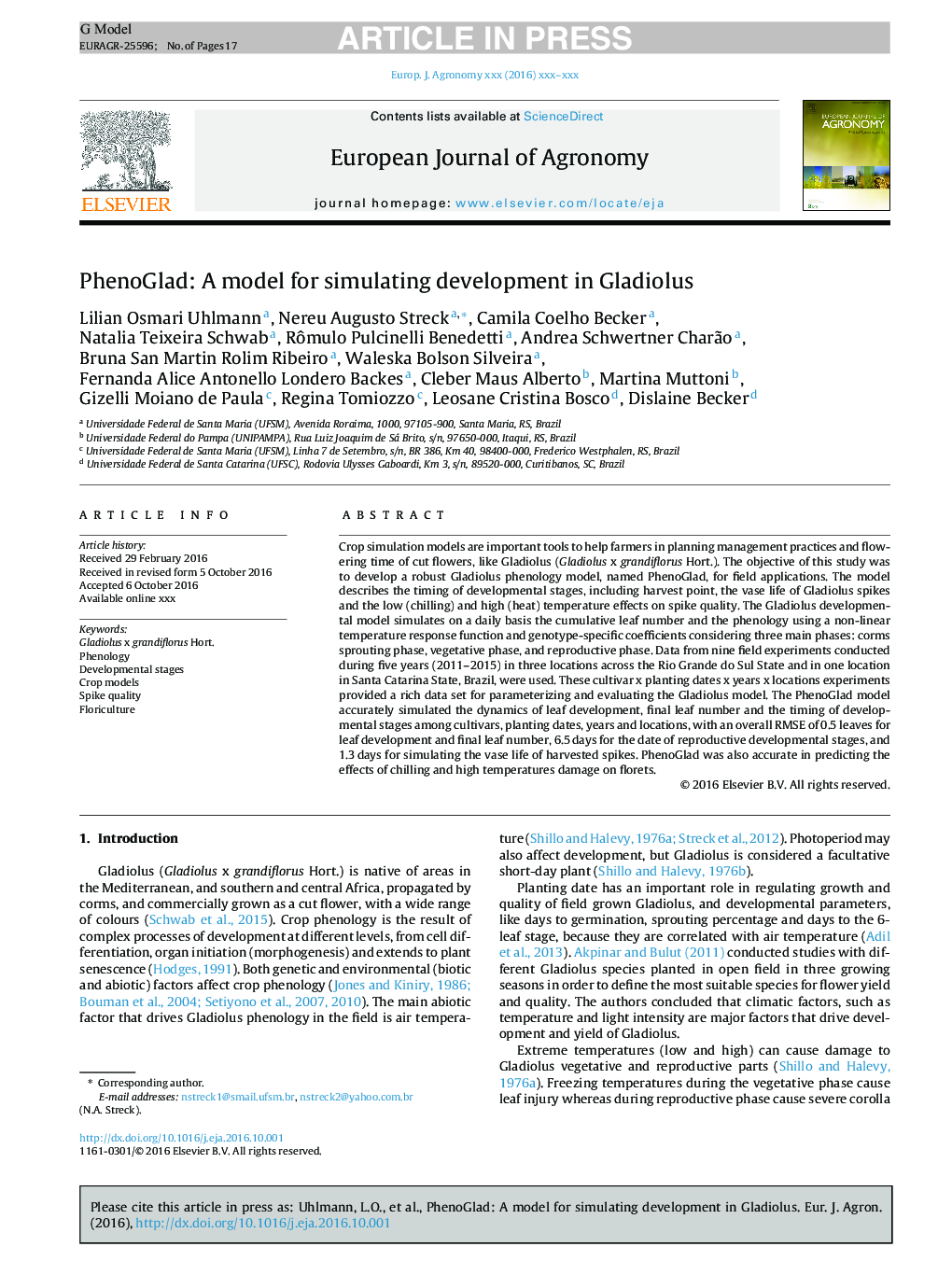| Article ID | Journal | Published Year | Pages | File Type |
|---|---|---|---|---|
| 5761323 | European Journal of Agronomy | 2017 | 17 Pages |
Abstract
Crop simulation models are important tools to help farmers in planning management practices and flowering time of cut flowers, like Gladiolus (Gladiolus x grandiflorus Hort.). The objective of this study was to develop a robust Gladiolus phenology model, named PhenoGlad, for field applications. The model describes the timing of developmental stages, including harvest point, the vase life of Gladiolus spikes and the low (chilling) and high (heat) temperature effects on spike quality. The Gladiolus developmental model simulates on a daily basis the cumulative leaf number and the phenology using a non-linear temperature response function and genotype-specific coefficients considering three main phases: corms sprouting phase, vegetative phase, and reproductive phase. Data from nine field experiments conducted during five years (2011-2015) in three locations across the Rio Grande do Sul State and in one location in Santa Catarina State, Brazil, were used. These cultivar x planting dates x years x locations experiments provided a rich data set for parameterizing and evaluating the Gladiolus model. The PhenoGlad model accurately simulated the dynamics of leaf development, final leaf number and the timing of developmental stages among cultivars, planting dates, years and locations, with an overall RMSE of 0.5 leaves for leaf development and final leaf number, 6.5Â days for the date of reproductive developmental stages, and 1.3Â days for simulating the vase life of harvested spikes. PhenoGlad was also accurate in predicting the effects of chilling and high temperatures damage on florets.
Related Topics
Life Sciences
Agricultural and Biological Sciences
Agronomy and Crop Science
Authors
Lilian Osmari Uhlmann, Nereu Augusto Streck, Camila Coelho Becker, Natalia Teixeira Schwab, Rômulo Pulcinelli Benedetti, Andrea Schwertner Charão, Bruna San Martin Rolim Ribeiro, Waleska Bolson Silveira, Fernanda Alice Antonello Londero Backes,
